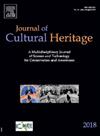Novel approaches for enhanced visualisation and recognition of rock carvings at Stonehenge
IF 3.3
2区 综合性期刊
0 ARCHAEOLOGY
引用次数: 0
Abstract
The sarsen uprights at Stonehenge feature the largest panels of Early Bronze Age axe-head carvings in the world. Archaeologists use these carvings to better understand the significance of the monument. Between 2011 and 2012, the analysis of laser scanning and photogrammetric data led to the identification of 71 axe-head carvings and one dagger carving, in addition to the 44 carvings already known. Recent advances in carving visualisation and machine learning warrants a reanalysis of this data using new methods. Two novel techniques for carving visualisation, difference of Gaussians and pseudo-depth mapping, are introduced and compared to four recent techniques, radiance scaling, openness, distance between meshes, and extended difference of Gaussians. On the northwest face of Stone 53, difference of Gaussians highlighted the presence of two previously unidentified carvings, ten potential areas of carving, and nine alternative interpretations on previously found carvings. Pseudo-depth mapping revealed the presence of a further two previously unidentified carvings. In addition, an existing classifier for 3-D shape representation, MeshNet, is converted into a technique for carving recognition. MeshNet achieved 90.7 % accuracy on labelling samples of surfaces at Stonehenge with and without carvings, close to the benchmark performance of 91.9 % on ModelNet40. Both difference of Gaussians and pseudo-depth mapping can be implemented for visualisation of highly faded rock carvings in under two hours and under ten minutes respectively, while the application of MeshNet serves as a feasibility study of semi-automated carving recognition.
增强巨石阵岩石雕刻的可视化和识别的新方法
巨石阵的石柱是世界上最大的早期青铜时代斧头雕刻板。考古学家利用这些雕刻来更好地了解这座纪念碑的意义。2011年至2012年间,通过对激光扫描和摄影测量数据的分析,除了已知的44个雕刻外,还发现了71个斧头雕刻和一个匕首雕刻。雕刻可视化和机器学习的最新进展保证了使用新方法重新分析这些数据。介绍了两种新的雕刻可视化技术,即高斯差分和伪深度映射,并将其与四种最新技术(亮度缩放、开放、网格间距离和高斯扩展差分)进行了比较。在53号石头的西北面,高斯分布的差异突出了两个以前未识别的雕刻,十个潜在的雕刻区域,以及对以前发现的雕刻的九种不同解释。伪深度图显示了另外两个先前未被识别的雕刻。此外,将现有的用于三维形状表示的分类器MeshNet转换为雕刻识别技术。MeshNet在巨石阵表面的标记样本上达到了90.7%的准确率,接近于ModelNet40上91.9%的基准性能。利用高斯差分和伪深度映射分别在2小时和10分钟内实现高度褪色岩刻的可视化,同时应用MeshNet对半自动化岩刻识别进行可行性研究。
本文章由计算机程序翻译,如有差异,请以英文原文为准。
求助全文
约1分钟内获得全文
求助全文
来源期刊

Journal of Cultural Heritage
综合性期刊-材料科学:综合
CiteScore
6.80
自引率
9.70%
发文量
166
审稿时长
52 days
期刊介绍:
The Journal of Cultural Heritage publishes original papers which comprise previously unpublished data and present innovative methods concerning all aspects of science and technology of cultural heritage as well as interpretation and theoretical issues related to preservation.
 求助内容:
求助内容: 应助结果提醒方式:
应助结果提醒方式:


